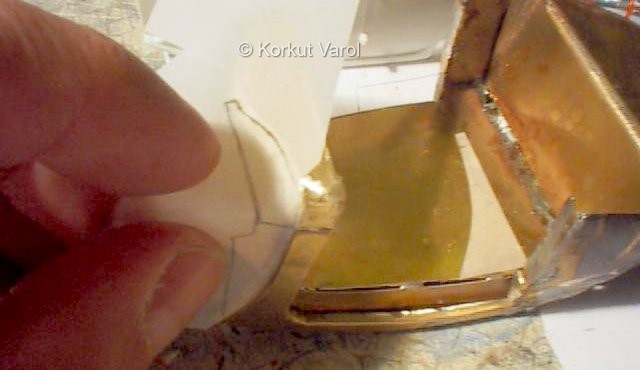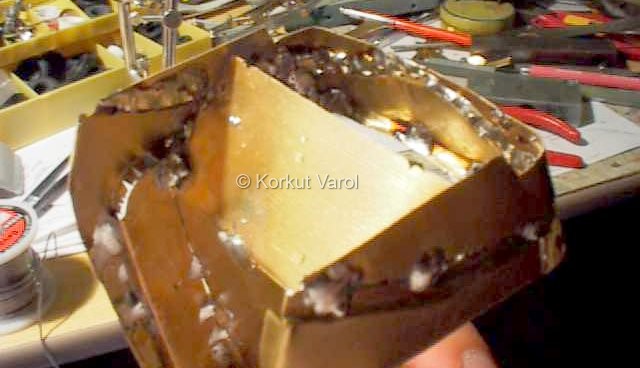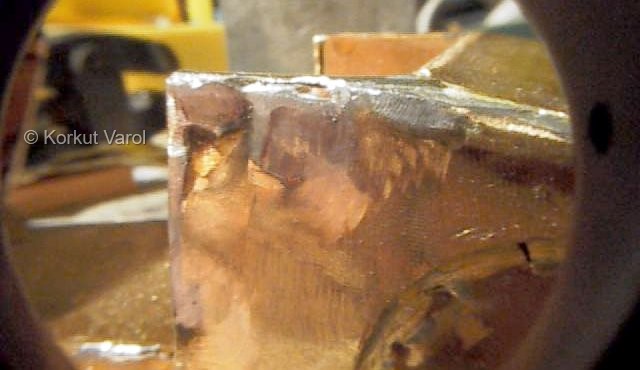|
CONSTRUCTION
STORY OF
SCRATCHBUILT
STREET ROD
|
 |
Building Period: 30 March 1999 - 30 June 1999
PART 6
THE BODY - 3
Templates for the firewall surrounding panels are traced on tracing paper.


Now the same profile is carried on the metal and cut.

The metal panel is bent to profile by hand and test-fitted. The same procedure is done for both sides.

The panels are point-soldered to the body to secure in place. The main soldering will be done on the back side.

The back side is fully soldered.

The firewall is traced on paper and carried on to metal and cut in the same manners described above.

After a couple of test-fittings and necessary trimmings, the firewall is soldered into place.

Finishing is with Dremel again, but
with
a metal grinding tip. You have to press against solder in this
situation
and regular cutting tip will immediately break into pieces. You may use
a thick grinding tip, but the metal tip has a flexibility so that it
will
not dive into metal if pressed excessively. So you can have a smoother
finish.

Here the parts are finished smooth.

The two internal panels that will fit
behind the door in the cockpit are prepared by paper-tracing and
carrying
on the metal. The bends are made by pliers.

Solder was applied at the meeting
edges
but the soldering iron proved to be weak for this area, so the solder
was
melted along the seam with the aid of a torch. Parts should be held
close
with some means as shown.

OOOPS ! The flame of the
torch was
too heavy for the poor metal. You see how the metal shrank? There are
two ways to repair the situation: Either fill more solder in the cavity
created, or leave it to the time of the polyester putty. I preferred
the
second choice.

The two internal panels are now soldered into place and ground smooth.

 ........................
........................